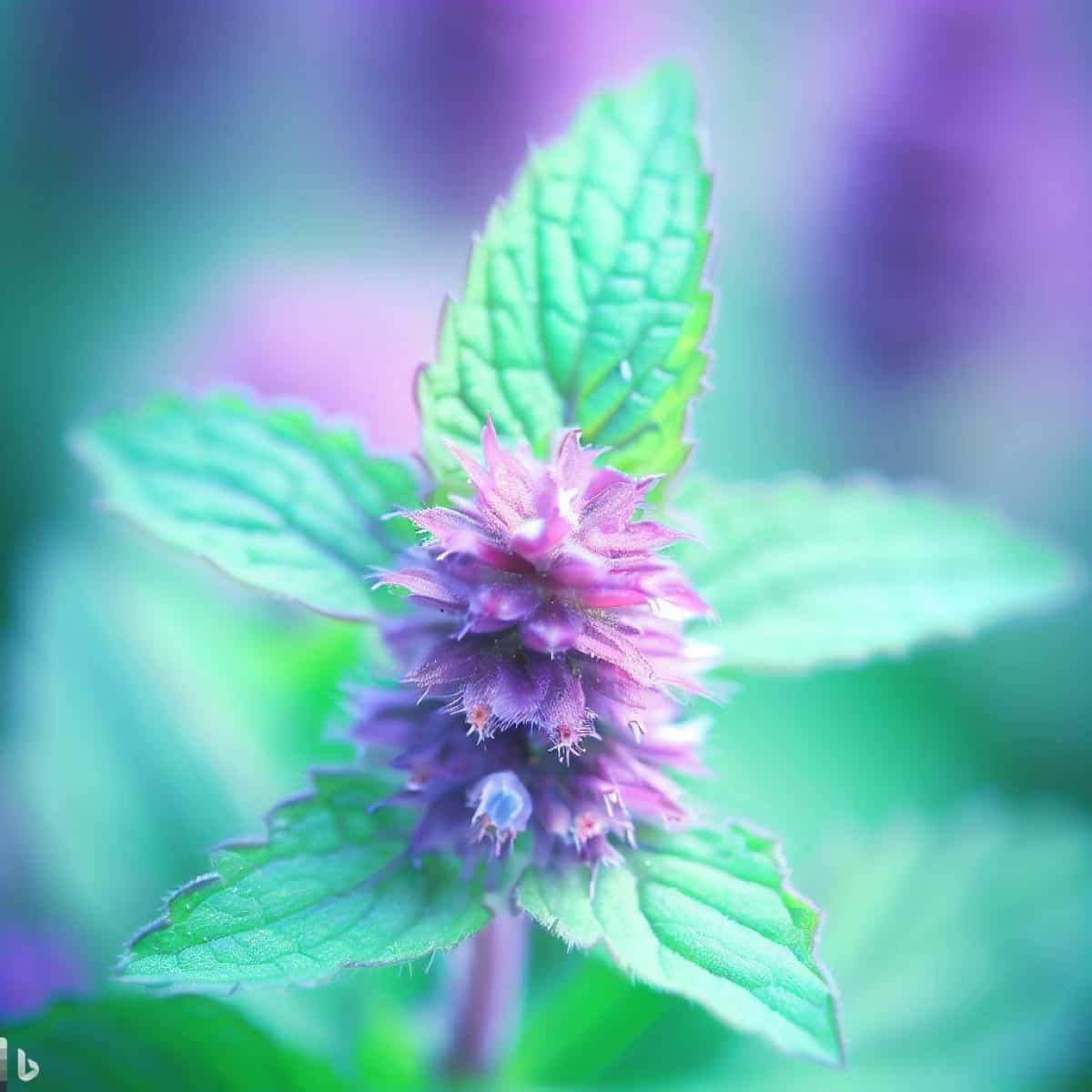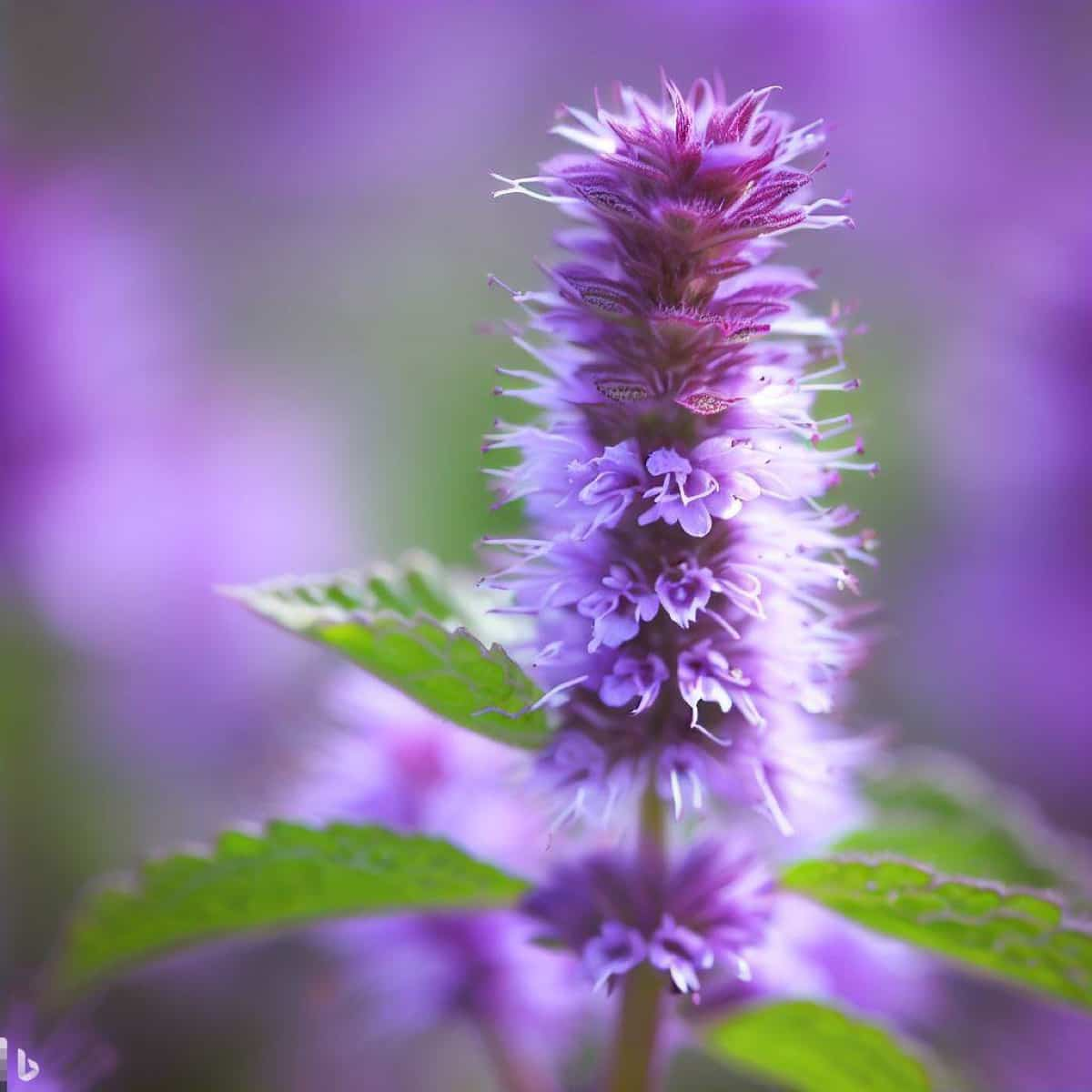Pennyroyal (Mentha pulegium) is a herbaceous plant that grows worldwide. Pennyroyal is the perfect choice to add a unique aromatic herb to your garden. Let’s check out how to grow and care for organic Pennyroyal/Mentha Pulegium below.

How to Grow and Care for Organic Pennyroyal
Choosing the Best Organic Soil for Pennyroyal Plants
Choosing the right soil for organic Pennyroyal plants is crucial for their success and overall health. Pennyroyal plant prefers well-draining soil, and sandy loam soil with a pH range of 6.0 and 7.5 works best for this aromatic herb. To ensure optimal growth, preparing the soil before planting Pennyroyal is important. Start by removing weeds or grass from the area and loosening the soil using a garden fork or tiller. This will help promote better root penetration and allow nutrients to reach the plant’s roots easily.
Step-by-Step Instructions for Growing Organic Pennyroyal at Home
- Firstly, choose a sunny spot with 6 hours of direct sunlight daily. Pennyroyal thrives in well-drained soil, so ensure the area has good drainage.
- Prepare the growing soil by removing weeds and loosening it using a garden fork or tiller. Mix some compost or organic matter to improve nutrient content and moisture retention.
- Next, sow the Pennyroyal seeds about 1/4 inch deep into the prepared soil. Space them evenly, leaving about 12 inches between each plant for proper airflow and growth.
- Water the seeds gently after planting and keep the soil moist until they germinate. Once seedlings emerge, reduce watering frequency and let the top few inches of soil dry out slightly between waterings.
- As Pennyroyal plants grow, be mindful of pests such as aphids or spider mites. Regularly inspect your plants and remove insects manually or use natural pest control methods like neem oil spray.
- Prune your Pennyroyal plants regularly by pinching off stem tips to promote bushier growth. Harvest leaves as needed throughout summer when fresh and vibrant for culinary use or drying purposes.
Information About Growing Organic Pennyroyal
| Common Name | Pennyroyal |
| Family | Lamiaceae |
| Plant Type | Herbaceous, perennial |
| Sun Exposure | Full, partial |
| Soil Type | Moist but well-drained |
| Soil pH | Acidic, neutral, alkaline |
| Bloom Time | Summer |
| Hardiness Zones | 6–9 (USDA) |
Organic Fertilizers for Promoting Healthy Pennyroyal Growth
One popular organic fertilizer option is compost. Made from decomposed organic matter, compost enriches the soil with beneficial microorganisms, improves its structure, and enhances nutrient availability for Pennyroyal plants. You can create your compost pile using kitchen scraps, yard waste, and other organic materials. Another effective organic fertilizer is manure. Rich in nitrogen, phosphorus, and potassium, manure adds vital nutrients to the soil, promoting vigorous growth in Pennyroyal plants.
Fish emulsion is yet another excellent choice for organic fertilization. This liquid fertilizer provides an immediate source of nutrients like nitrogen and calcium to stimulate healthy leaf growth in Pennyroyal plants. Seaweed is packed with micronutrients such as iron, magnesium, and zinc necessary for robust plant development. Remember that when using any organic fertilizer on your Pennyroyal plants, it’s important to follow package instructions carefully and apply them sparingly to prevent over-fertilization, which could harm the plant’s health rather than enhance it.
Proper Watering Schedule for Organic Pennyroyal Plants
Proper watering is essential for the successful cultivation of organic Pennyroyal plants. It’s important to keep a close eye on the soil moisture levels. One way to determine if your Pennyroyal needs watering is by checking the soil moisture using your finger or a moisture meter. Another factor to consider when establishing a watering schedule is weather conditions.
To prevent overwatering, ensure proper drainage by choosing a well-draining soil mix and pots with drainage holes. Remember that every garden environment is unique, so adjust your watering schedule based on humidity levels and rainfall patterns in your area.
In case you missed it: 10 DIY Plant Foods That Replace Commercial Fertilizers: Homemade Organic Liquid and Compost

Natural Pest Control Methods for Organic Pennyroyal
Keeping pests away from your organic Pennyroyal plants ensures their healthy growth and prevents damage. One effective way to deter pests from invading your Pennyroyal plants is by planting companion flowers or herbs nearby. Many aromatic plants, such as Marigolds, Lavender, and Rosemary, have natural insect-repelling properties that help keep harmful bugs at bay.
Another natural approach is the use of homemade organic sprays for growing Pennyroyal. You can create a simple solution using ingredients like garlic, neem oil, or soap diluted with water. Spraying this mixture on your Pennyroyal leaves will deter pests while maintaining the plant’s organic integrity.
Regularly inspecting your Pennyroyal plants for signs of infestation is crucial in identifying potential problems early on. If you notice any discolored leaves or evidence of chewing insects, immediately address the issue before it spreads further. Proper sanitation practices, such as removing fallen debris and weeds around the herb bed, reduce hiding spots for pests, and minimize their attraction to the area.
Preventing Diseases and Common Issues in Organic Pennyroyal Cultivation
One of the most common problems is powdery mildew disease, which appears as a white, powdery coating on the leaves. To prevent this issue, ensure your plants have good air circulation by spacing them adequately and avoiding overcrowding. Another problem that can affect Pennyroyal is root rot. This occurs when the roots become waterlogged due to overwatering or poor drainage. To prevent root rot, choose well-draining soil for planting and avoid watering excessively.
Plant insects like aphids and spider mites can also threaten your Pennyroyal plants. These pests can suck sap from the leaves, causing them to turn yellow and wilt. Try using insecticidal soap to combat these insects naturally. Look for any signs of nutrient deficiencies in your Pennyroyal plants. Yellowing plant leaves may indicate a lack of nitrogen or iron, while stunted growth could suggest insufficient phosphorus or potassium levels. Regularly fertilize with organic options such as compost tea or fish emulsion to ensure proper nutrition.
Companion Plants for Organic Pennyroyal and Their Benefits
One such companion plant is chamomile. Chamomile adds beauty to your garden with its delicate white flowers and helps repel pests like aphids and flies. Plus, the scent of chamomile has a calming effect on humans and plants alike. Another great companion plant for Pennyroyal is lavender. Lavender attracts beneficial insects crucial in pollination. Additionally, lavender’s strong fragrance is a natural deterrent against pests such as moths and mosquitoes.
Marigolds are another excellent choice for accompanying Pennyroyal in your garden. These vibrant flowers add color and prevent harmful nematodes from attacking your precious herbs. Consider planting yarrow alongside Pennyroyal. Yarrow attracts predatory insects that feed on common garden pests like aphids and spider mites.
Harvesting and Drying Techniques for Organic Pennyroyal Leaves
- Timing is key: As with many herbs, timing is crucial when harvesting Pennyroyal leaves. The best time to harvest Pennyroyal leaves is before the plant flowering.
- Gentle harvesting: Always opt for gentle harvesting methods to ensure healthy regrowth. Carefully pluck individual leaves from different plant parts rather than pulling or tearing off whole branches. This will allow new growth to continue thriving.
- Drying methods: You can dry your organic Pennyroyal leaves in several ways, depending on personal preference and available resources.
- Air drying: One popular method involves hanging small bundles of freshly harvested Pennyroyal upside down in a cool, dark place with good air circulation. Ensure not to overcrowd the bundles, as this could promote mold growth.
- Dehydrator: If you have a dehydrator at home, set it on low heat and spread the clean Pennyroyal leaves on its trays in a single layer.
- Storage tips: Once dried properly, meaning they crumble easily between your fingers, it’s time to store your organic Pennyroyal leaves. Please place them in an airtight container.
In case you missed it: Benefits of Kelp Meal for Plants: How to Use as Compost for Organic Gardening

Conclusion
Growing organic Pennyroyal can be a rewarding experience, but it does require some care and attention to ensure successful cultivation. Organic fertilizers are crucial in promoting healthy growth for your Pennyroyal plants.
- Feed Your Flock for Less: Top 10 Tips to Save on Chicken Feed
- Ultimate Guide to Ossabaw Island Hog: Breeding, Raising, Diet, and Care
- Hatching Answers: The Top 10 Reasons Your Chickens Aren’t Laying Eggs
- Eggs and Economics: Breaking Down the Cost of Raising Backyard Chickens
- Defend Your Greens: Proven Methods to Keep Iguanas Out of Your Garden
- Ultimate Guide to Cinnamon Queen Chicken: A Comprehensive Guide for Beginners
- Ultimate Guide to California Tan Chicken: Breeding, Raising, Diet, Egg-Production and Care
- Ultimate Guide to Marsh Daisy Chicken: Breeding, Raising, Diet, and Care
- 10 Types of Chicken Farming Businesses You Can Start for Profits